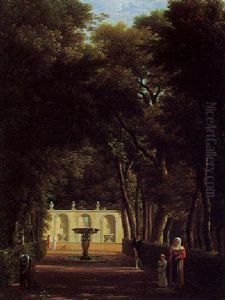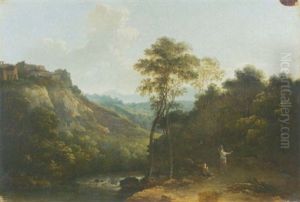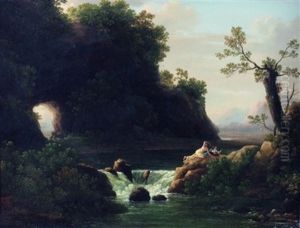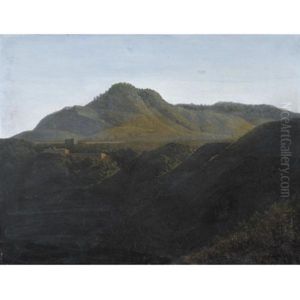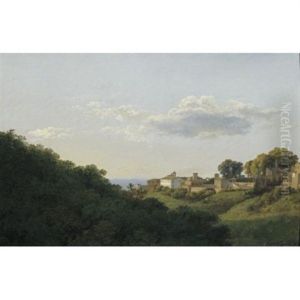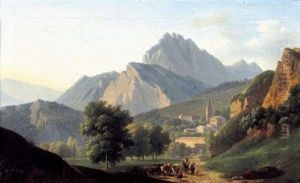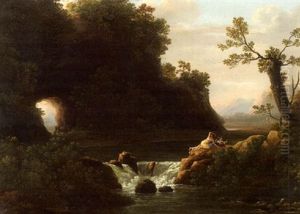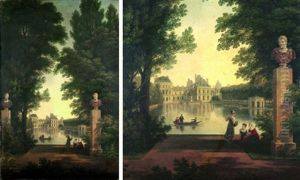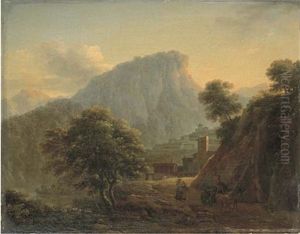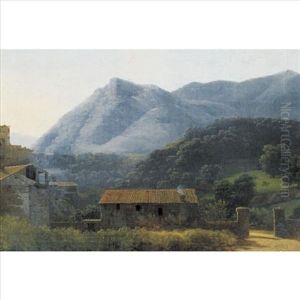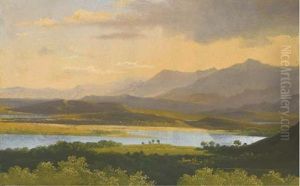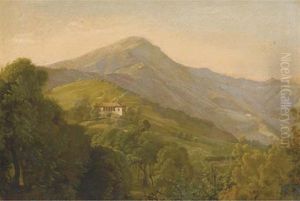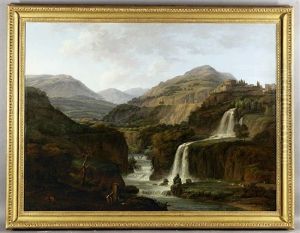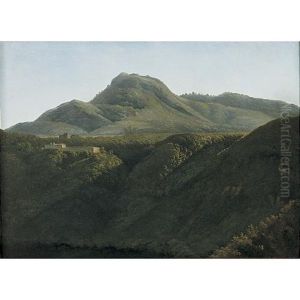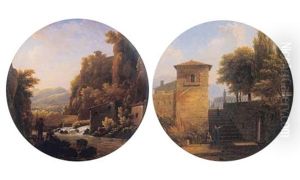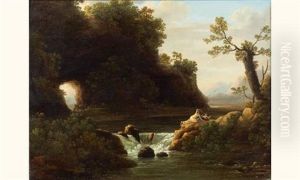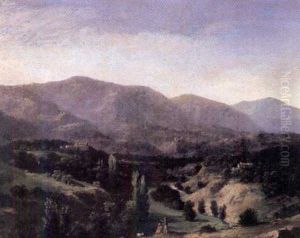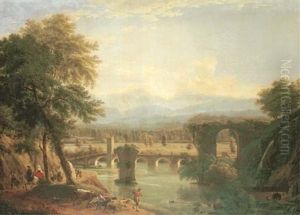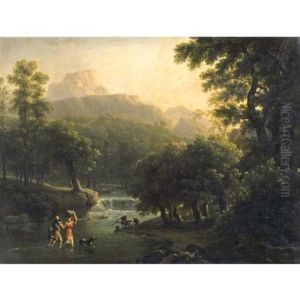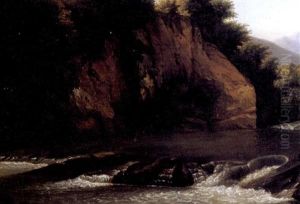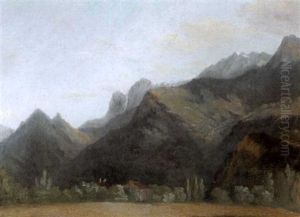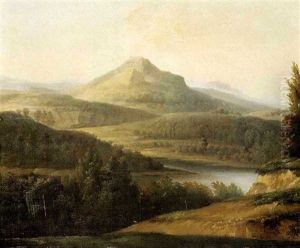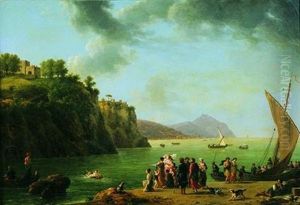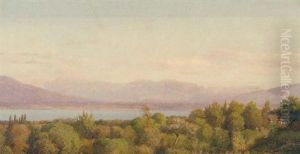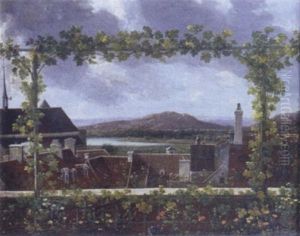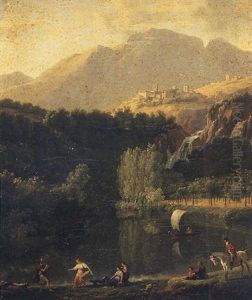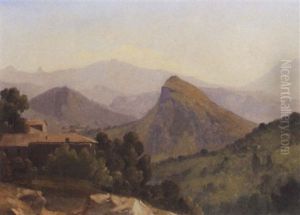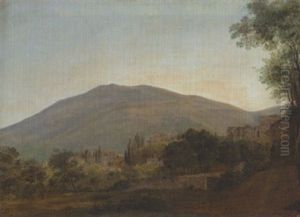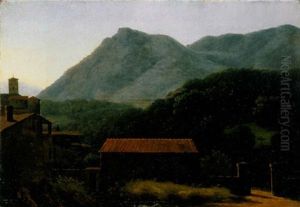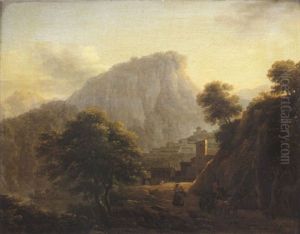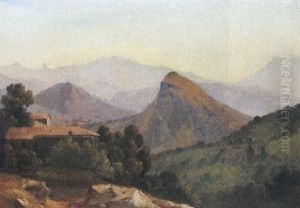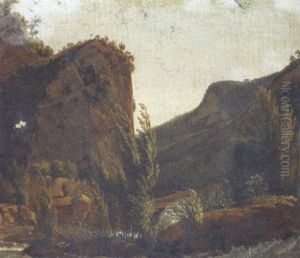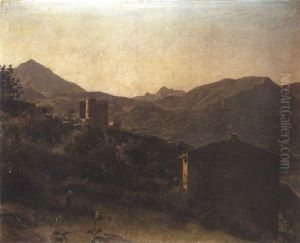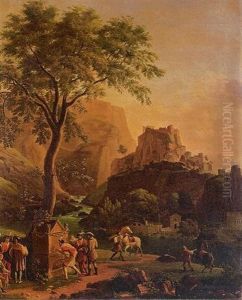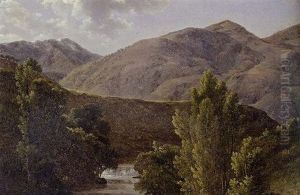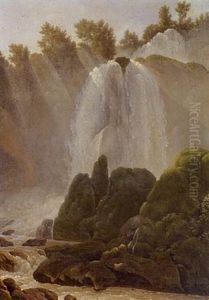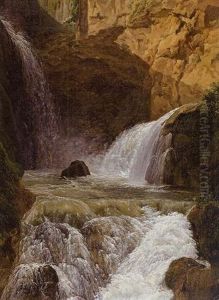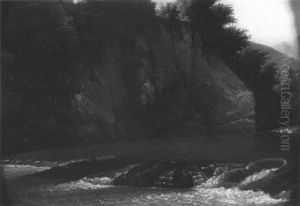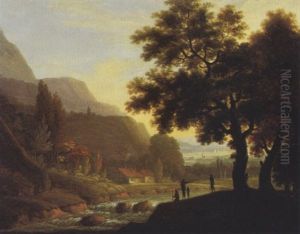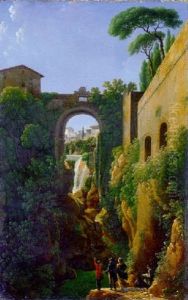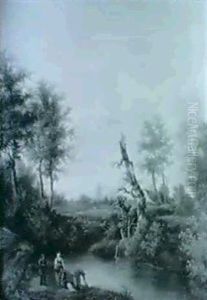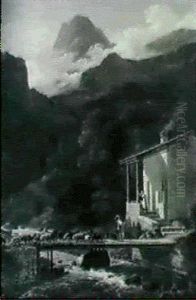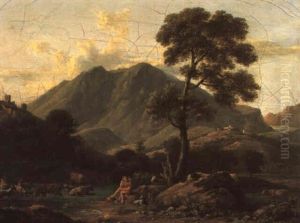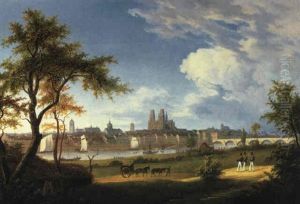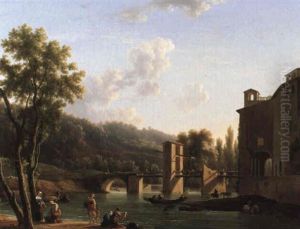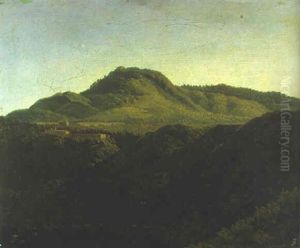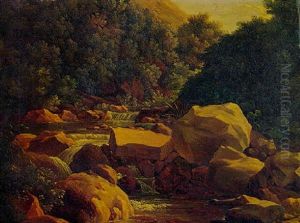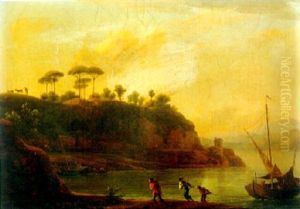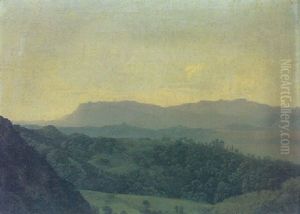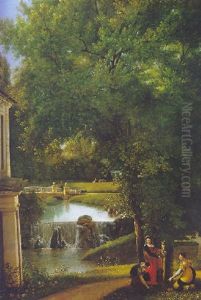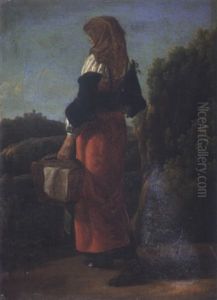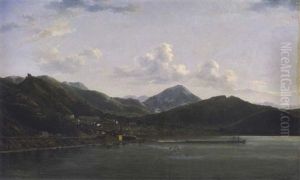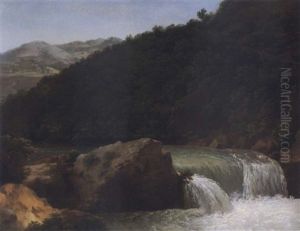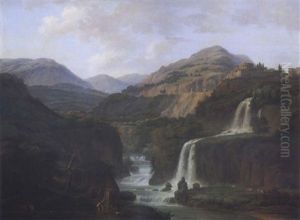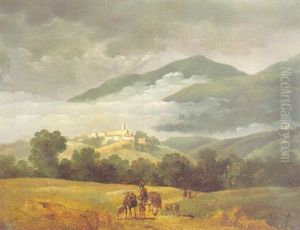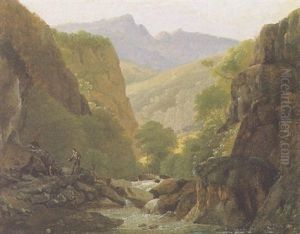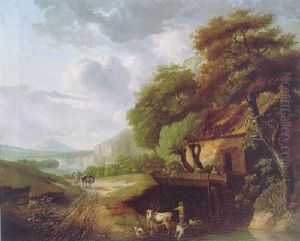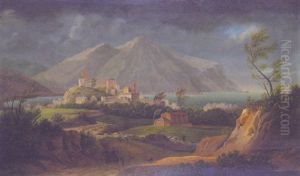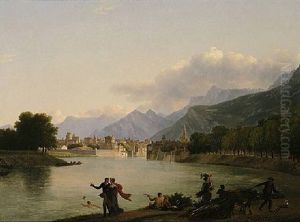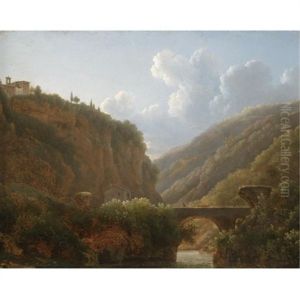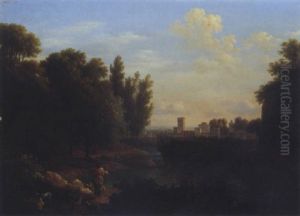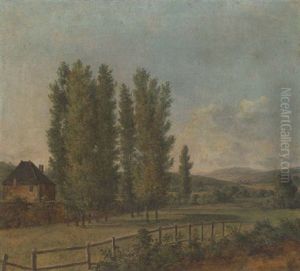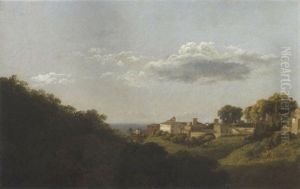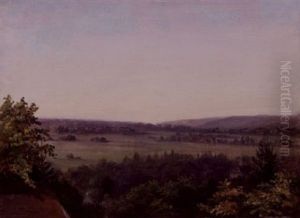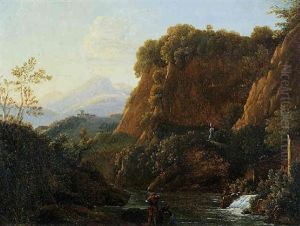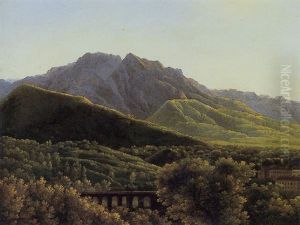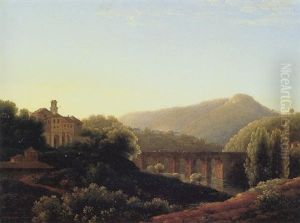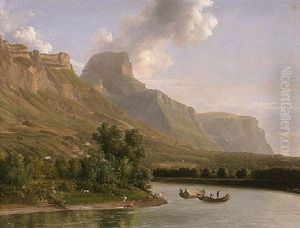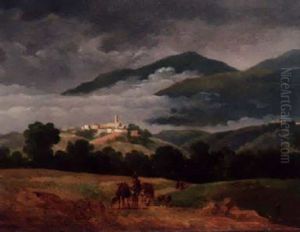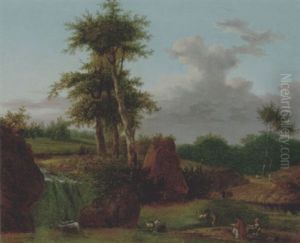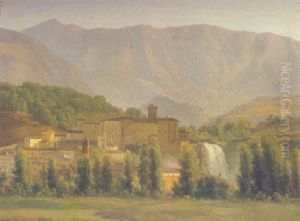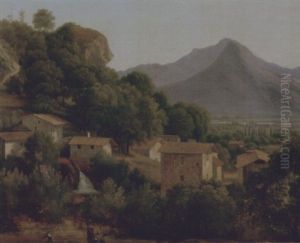Jean Joseph Xavier Bidault Paintings
Jean Joseph Xavier Bidault was a French painter born on January 15, 1758, in Carpentras, Vaucluse, France. He was primarily known for his landscape painting, an art genre that was gaining significant popularity during the late 18th and early 19th centuries. Bidault is often associated with the Neoclassical movement, which was characterized by a return to classical ideas of antiquity, simplicity, and harmony in the arts.
Bidault studied art under the guidance of Gabriel-François Doyen and Joseph-Benoît Suvée, both of whom were influential artists of their time. His education in the arts was comprehensive, and he developed his skills in the tradition of the French Academy, which emphasized drawing from live models and classical sculptures and promoted historical and mythological themes.
In 1783, Bidault won the prestigious Prix de Rome for painting, which afforded him the opportunity to study at the French Academy in Rome, housed in the Villa Medici. It was in Italy that Bidault was deeply influenced by the picturesque landscapes and ancient ruins. His exposure to the Italian countryside and its classical heritage had a lasting effect on his artistic style.
Bidault's work was well received, and upon his return to France, he became a member of the Academy and exhibited his paintings at the Salon, the official art exhibition of the Académie des Beaux-Arts in Paris. His paintings typically depicted serene and idyllic landscapes, often incorporating ruins or pastoral scenes that evoked a sense of poetic antiquity. He meticulously rendered his subjects with a clear understanding of light and atmosphere, which was admired by his contemporaries and collectors alike.
Throughout his career, Bidault remained dedicated to landscape painting, although he also took on pupils and worked on commissions for religious and historical works. He continued to exhibit at the Salon until 1833 and was recognized by his peers for his contributions to French art.
Jean Joseph Xavier Bidault passed away on October 20, 1846, in Montmorency, now part of the Val-d'Oise department in Île-de-France, near Paris. His legacy is preserved in his works, which can be found in various museum collections, and his influence on the Neoclassical landscape tradition in French art history.
